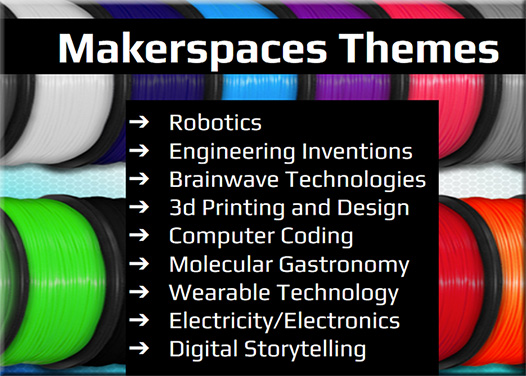Putting Away the Books to Learn — from medium.com by Jackie Ashton; with thanks to Angela Maiers for this resource
The “maker” movement has swept across schools in California and beyond. Can it fundamentally change K-12 education?
Excerpt:
The room, which more closely resembles a fabrication studio than middle school classroom, boasts tools like a drill press, torch, welder, laser cutter, forge, and 3D-printer. Books with titles like Fabrication: Essays on Making Things & Making Meaning and The Geometry of Sheet Metal Work rest on a shelf. Safety goggles and a collection of posters around the room remind students to “respect” the tools and keep in mind “what they can do to you if not used with thought and care.”
East Bay School for Boys (EBSB) is one of many schools across the country?—?and in the Bay Area in particular?—?that sees great value in offering its students DIY (do-it-yourself) learning experiences, as opposed to traditional learning via rote memorization or teacher-led lesson plans. It’s part of the “maker” movement?—?that is, the trend of encouraging people to build new devices from scratch?—?which has exploded in recent years, from elementary school classrooms to Silicon Valley board rooms.
In the education world, public, private, and charter schools alike are empowering kids to roll up their sleeves and jump on the experiential bandwagon. Teachers encourage students to tinker with materials like e-textiles, conductive thread, 3D printed objects, and Makey Makey, a simple invention kit that anyone can use.

Also see:
- The work of Laura Fleming — including her book, Worlds of Making: Best Practices for Establishing a Makerspace for Your School
- as well as some slides from a recent presentation by Laura:
- Maker Month: A series about the merits and challenges of project-based learning — also from medium.com
- Five Key Principles to Makerspace Success — by Trevor Shaw, Director of Technology, Dwight-Englewood School
- An Ecosystem of Making for Student Engineers — from makerbot.com
- A Librarian’s Guide to Makerspaces: 16 Resources — from oedb.org











